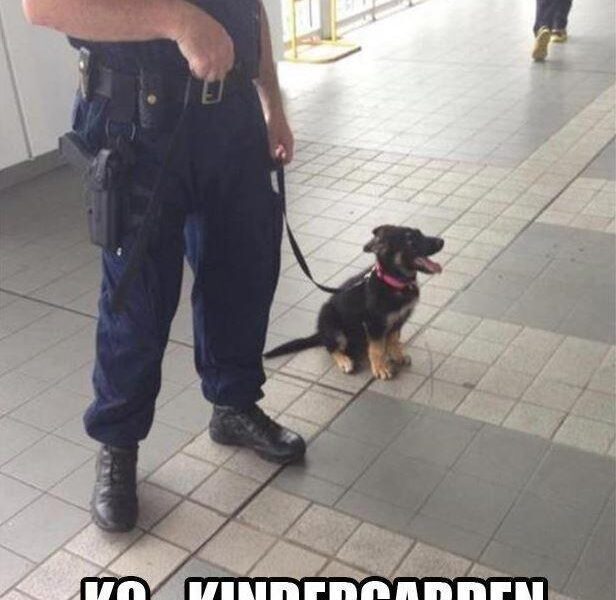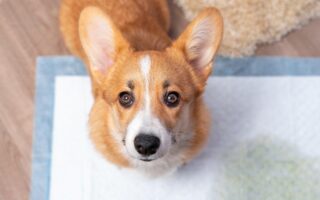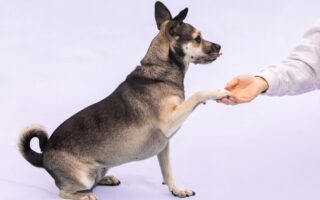Introduction: Welcome to K9 Kindergarten: A Pawsitive Start to Lifelong Learning
In a world where the bond between humans and canines continues to deepen, a new frontier of education emerges: K9 Kindergarten. This innovative concept is designed not just for the furrier members of our families, but also for their devoted owners, aiming to foster harmonious relationships while instilling essential skills. Just as young children enter kindergarten to explore, socialize, and learn, K9 Kindergarten offers a playful yet structured environment where puppies can embark on their educational journey. Packed with engaging activities, socialization opportunities, and foundational training techniques, this unique program sets the stage for well-mannered companions and teaches owners the invaluable insights needed to nurture their furry friends. Join us as we delve into the world of K9 Kindergarten, exploring its benefits, methodologies, and the joy it brings to pups and their people alike.
Table of Contents
- Understanding the Foundations of K9 Kindergarten Curriculum
- Essential Skills for Socialization and Behavior Development
- Creating a Positive Learning Environment for Young Dogs
- Guidelines for Choosing the Right K9 Kindergarten Program
- Q&A
- Closing Remarks
Understanding the Foundations of K9 Kindergarten Curriculum
The K9 Kindergarten curriculum is designed to establish a strong foundation for both dogs and their owners, focusing on essential skills and behaviors that foster a harmonious relationship. Central to this curriculum are key learning objectives that encompass various aspects of canine development. These include:
- Basic Obedience: Teaching commands such as sit, stay, and come to ensure good manners.
- Socialization: Exposing dogs to different environments, animals, and people to reduce anxiety.
- Positive Reinforcement: Encouraging good behavior through rewards, creating a motivated learner.
- Behavioral Understanding: Equipping owners with the knowledge to interpret canine body language and needs.
This structured approach also gives rise to a gradual progression from simple tasks to more complex behaviors, ensuring that both dogs and handlers feel confident at each stage. To quantify the effectiveness of the curriculum, assessments are conducted periodically, which can be summarized in a simple table:
| Assessment Type | Frequency | Focus Area |
|---|---|---|
| Basic Commands | Weekly | Obedience |
| Socialization Check | Biweekly | Interaction Skills |
| Behavior Review | Monthly | Understanding Signals |
Through the K9 Kindergarten curriculum, owners learn not just how to train their pets, but also how to become better companions, enriching the lives of both parties involved.
Essential Skills for Socialization and Behavior Development
In the vibrant world of canine development, fostering essential skills is key to nurturing well-rounded socialization and behavior in your furry friend. First and foremost, effective communication is paramount; dogs must learn to understand both verbal cues and body language. This can be achieved through consistent training that includes positive reinforcement techniques, facilitating a healthy bond between you and your pet. Furthermore, exposing your pup to diverse environments and different dog breeds helps promote adaptability, allowing them to navigate social situations with confidence.
Another crucial aspect lies in teaching your dog about boundaries and manners. Help your pet understand appropriate interactions, whether it’s during playtime or in a more relaxed setting. Practice makes perfect, so engaging in group activities or puppy classes can provide immense benefits. Consider the following skills that can greatly enhance your dog’s behavior and social aptitude:
| Skill | Description |
|---|---|
| Engagement | Active participation in dog playgroups to improve social interaction. |
| Impulse Control | Teaching delayed gratification through games like “wait” or ”stay.” |
| Barking Etiquette | Understanding the right time to bark and when to remain quiet. |
| Recall Skills | Ensuring your dog comes when called, enhancing their safety. |
Creating a Positive Learning Environment for Young Dogs
Establishing a nurturing atmosphere for young dogs is crucial for their development and socialization. By providing a space that promotes trust and security, you set the stage for effective learning. This environment can be achieved through:
- Positive Reinforcement: Reward good behavior with treats, praise, and playtime.
- Social Interactions: Encourage safe interactions with other dogs to help them learn boundaries and communication.
- Safe Spaces: Designate quiet areas where puppies can retreat if they feel overwhelmed.
- Structured Activities: Implement engaging exercises that keep them focused and stimulated.
For optimal learning, consider incorporating routine into their daily experiences. A well-structured day can include training sessions, socialization exercises, and playtime, which all contribute to a balanced approach. Here’s a simple schedule to illustrate:
| Activity | Duration | Purpose |
|---|---|---|
| Morning Walk | 30 mins | Physical exercise & exploration |
| Training Session | 15 mins | Skill development |
| Playtime with Peers | 20 mins | Socialization |
| Quiet Time | 15 mins | Calm & recharge |
Guidelines for Choosing the Right K9 Kindergarten Program
Choosing the right K9 kindergarten program for your furry friend is an important decision that can set the foundation for their future behavior and socialization. When evaluating different programs, consider the experience of the instructors. Look for trainers who are certified and have demonstrated success in working with puppies. Their training style should align with positive reinforcement techniques to ensure a fun and effective learning environment. Additionally, assess the curriculum offered. A well-rounded program should cover essential skills such as basic commands, socialization with other dogs and people, and even potty training.
It’s also crucial to consider the class size and structure. Smaller class sizes often allow for more personalized attention and a better learning experience for your pup. Look for programs that provide a balance of structured lessons and playtime, as socialization is just as important as training. To give you a clearer perspective, here’s a simple comparison of what to look for:
| Criteria | Ideal Features |
|---|---|
| Instructor Experience | Certified trainers with positive reinforcement focus |
| Curriculum | Basic commands, socialization, and potty training |
| Class Size | Small groups for personalized attention |
| Learning Environment | Safe, engaging, and stimulating |
Q&A
Q&A: All About K9 Kindergarten
Q: What is K9 Kindergarten?
A: K9 Kindergarten is a specialized program designed for puppies aged around 8 weeks to 6 months. It focuses on socialization, basic obedience training, and foundational skills to prepare young dogs for a well-rounded life with their human companions.
Q: Why is early training important for puppies?
A: Early training is crucial because it helps puppies develop good habits and behaviors while they’re still impressionable. This is the prime time for socializing them with other dogs and people, which can prevent issues like fearfulness and aggression later on.
Q: What can I expect during K9 Kindergarten classes?
A: In K9 Kindergarten, you can expect a mix of structured activities that include socialization with other puppies, basic commands like sit, stay, and come, as well as fun games that reinforce learning. Most classes also include discussions on puppy care, nutrition, and health.
Q: How long do K9 Kindergarten classes usually last?
A: Classes typically run for about 6 to 8 weeks, with sessions lasting around 1 hour each. This allows enough time for both the puppies and their owners to learn and practice new skills.
Q: Can any puppy join K9 Kindergarten?
A: Most puppies can join K9 Kindergarten as long as they have received their first round of vaccinations. It’s important to check with the training facility about specific requirements and any breed considerations.
Q: How do I choose a good K9 Kindergarten program?
A: Look for programs led by certified trainers with experience in puppy development. Consider the facility’s environment—safe, clean, and spacious—and inquire about the class size to ensure plenty of individual attention.
Q: What if my puppy doesn’t seem to enjoy K9 Kindergarten?
A: It’s not uncommon for some puppies to feel a little overwhelmed at first. Trainers are experienced in helping shy puppies adjust. If the concern persists, you may want to discuss it with the trainer to explore alternatives that might better suit your dog’s temperament.
Q: Will K9 Kindergarten solve all my puppy’s behavioral problems?
A: While K9 Kindergarten provides a strong foundation, it’s essential to remember that ongoing training and reinforcement are necessary as your puppy grows. It addresses many aspects of early behavior but isn’t a one-stop solution for all issues.
Q: How can I reinforce what my puppy learns in K9 Kindergarten at home?
A: Consistency is key! Use the same commands taught in class, practice regularly, and reward good behaviors with treats or praise. Engaging in daily play and interaction will also solidify the skills learned during training.
Q: Why is it called K9 Kindergarten?
A: The name draws a parallel to human kindergarten, highlighting the idea that early learning and social experiences set the stage for future development. Just as children benefit from school at a young age, puppies thrive in a structured environment that promotes learning and growth.
Q: Can adult dogs benefit from K9 Kindergarten?
A: While K9 Kindergarten is primarily for puppies, adult dogs can also benefit from training programs tailored to their age group. Training principles apply across all ages, so it’s never too late to learn or correct behaviors!
Whether you’re a seasoned dog owner or a first-time puppy parent, K9 Kindergarten can offer invaluable lessons for both you and your furry friend, setting the stage for a harmonious life together!
Closing Remarks
As we conclude our exploration of K9 Kindergarten, it’s evident that this innovative approach to training and socializing our four-legged companions lays a robust foundation for their future. Just like young children thrive in a structured, playful environment, puppies flourish when given the opportunity to learn essential skills while surrounded by peers. The bonds they form, the lessons they learn, and the confidence they gain in this nurturing setting create lasting impacts that extend far beyond the classroom.
Whether you’re a seasoned dog owner or a first-time puppy parent, embracing the concept of K9 Kindergarten can transform not only your pup’s behavior but also the shared journey you’re embarking on together. As you continue to nurture your furry friend’s growth, remember: a well-adjusted pup is not only a joy to have at home, but also a treasured member of the community. So, as you prepare for this exciting chapter, let the spirit of play and learning guide your way—because when it comes to training, every day is an opportunity for discovery and growth.



